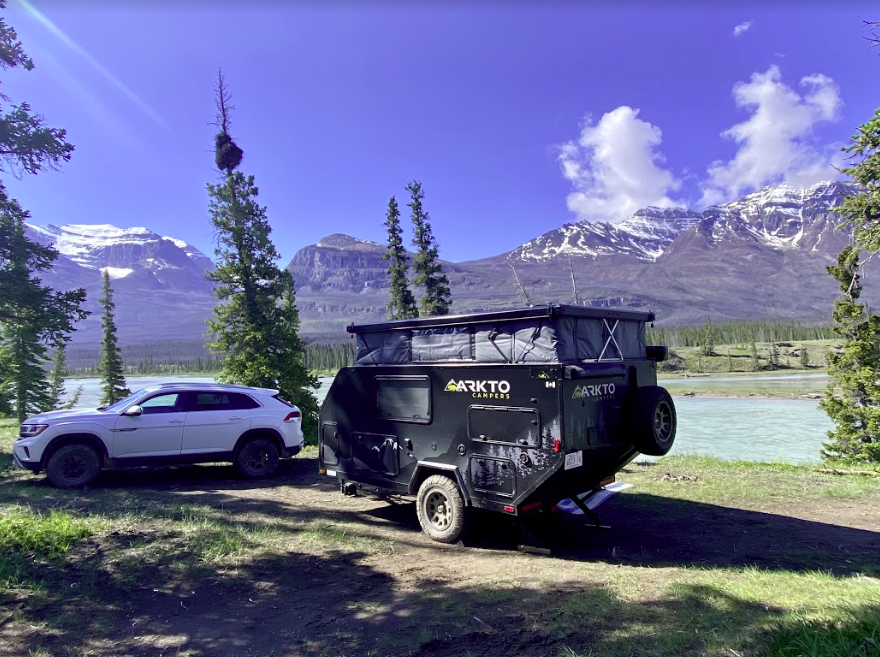It’s been a decade since the Society of Automotive Engineers (along with any respective consumer and government agencies) hammered out a common, agreed upon method of testing vehicles to establish tow ratings. Called J-2807, this agreement ensured a reliable and transparent method of determining what weight every truck could safely tow. So, even ten years later, it’s worth brushing up on this information to remind truck owners that what you now know to be your truck’s tow rating wasn’t ‘known’ at all just a decade ago. And now you also know it is all thanks to J-2807.
Consider the fact that for close to a hundred years after vehicles became commonplace, there was no way to compare towing weights ‘apples to apples’ because each company had its own, typically very secret, formula for determining what tow weights it would publish to the public.
This was the reality that spawned ridiculous claims of extreme towing ability, and weight supremacy wars waged through advertising, causing untold frustration for reviewers like me trying to decipher exactly how these companies came up with the numbers for their respective claims – and they didn’t share their secrets very readily.
Adhering to J-2807 was a voluntary decision in the auto industry and not all manufacturers got on board at the same time. It took several years to get them using this means of regulation as standard. Toyota was one of the first, but by 2015 they had all, finally, fallen in line. Now all new trucks are governed by J-2807. 2015 is also an important date to remember, since if you are in the market for a used truck, you know that even most five-year-old trucks will be J-2807 compliant.
Now if we could only get them all to agree on how to determine payload as well. This vital feature of every truck is still shrouded in secrecy and I have yet to find a manufacturer who was willing to divulge the distinct formula of how they determine the payload on their trucks. That’s frustrating to deal with after all the drama of regulating J-2807 and hoping the industry had learned something from it. But that lesson is yet to be learned, it seems.
Eventually, and it must happen at some point, all manufacturers will do well to follow the same testing criteria the SAE set out for determining tow rating. What follows then is an outline similar to what the SAE started with in 2008, and then subsequently took five years of struggle to get approved.
The five key areas addressed by J-2807 are listed under “Performance Requirements for Determining Tow-Vehicle Gross Combination Weight Rating and Trailer Weight Rating” and include:
- An engine’s power and torque characteristics.
- The powertrain’s cooling capacity.
- Chassis and powertrain durability.
- Handling during cornering and braking manoeuvres.
- The vehicle’s hitch structure.
J-2807 ended the absurdity of publishing tow ratings that for example, were 500 lb less for a dual wheeled truck than a single wheeled one. Strange? Yes, but this was the reality for years with major manufacturers unwilling to submit to a standard method of consensus. The bizarre explanation for this anomaly (which was prised from inside connections) was that once the company sets a maximum tow rating (less the weight of the truck), the extra weight of the additional two wheels and heavier axle had to then be deducted from that maximum (this despite the known fact that a dually can carry more than a single wheeled truck).
Today the SAE standard sets Maximum Gross Combination Weight (GCWR) and Trailer weight rating (TWR) by testing as follows:
Acceleration Requirements
The tow vehicle must meet this level road performance to claim a particular TWR:
- Acceleration from zero to 30 mph in 12.0 seconds or less in vehicle with a single rear wheels.
- Acceleration from zero to 30 mph in 14.0 seconds or less in vehicles with dual rear wheels.
- Acceleration from zero to 30 mph in 16.0 seconds or less in vehicles with dual rear wheels and a GVWR over 13,000 pounds.
- Acceleration from zero to 60 mph in 30.0 seconds or less in vehicles with single rear wheels.
- Acceleration from zero to 60 mph in 35.0 seconds or less in vehicles with dual rear wheels.
- Acceleration from zero to 60 mph in 40.0 seconds or less in vehicles with dual rear wheels and a GVWR over 13,000 pounds.
- Forty to 60 mph passing acceleration in 18.0 seconds or less in vehicles with single rear wheels.
- Forty to 60 mph passing acceleration in 21.0 seconds or less in vehicles with dual rear wheels.
- Forty to 60 mph passing acceleration in 24.0 seconds or less in vehicles with dual rear wheels and a GVWR over 13,000 pounds.
Grade Launch Requirements
The tow vehicle must be capable of repeatedly moving from rest for a distance of 16 feet on a 12% grade in both forward and reverse directions. Five such launches must be accomplished within five minutes by the vehicle in each direction.
Highway Grade Ability
To achieve a particular TWR, a vehicle must maintain a minimum cruising speed while climbing the grade at Davis Dam on state roads 68 and 163 in Arizona and Nevada. This 12-mile-long run originating in Bullhead City, Arizona, involves grades that vary between 3-7% with an average over 5%. During this test, the minimum acceptable ambient temperature is 100-degrees F. and AC systems must be operating on the maximum cold setting with no recirculation and the blower on the highest possible setting.
Single rear wheel vehicles must be able to maintain an average of at least 40 mph on this grade, whereas dual rear wheel vehicles are required to maintain 35 mph or more here. Dual rear wheel vehicles with a GVWR over 13,000 lb must maintain at least 30 mph.To pass, there can be no vehicle component failures, no warning lamps, and no diagnostic codes alerting the driver. In addition, the tow vehicle cannot lose any engine coolant. The vehicle under test must additionally be equipped with the lowest axle ratio available from the manufacturer.
Handling Requirements
J2807 specifies that an under-steering attitude must be maintained up to at least 0.4g cornering without a weight distributing hitch. With a weight distributing hitch (which transfers load to the front wheels), an under steering attitude must be maintained up to only 0.3g cornering.
Braking Requirements
The test vehicle and trailer must stay within an 11.5-foot-wide traffic lane during stopping tests.
Stopping requirements from 20 mph without use of trailer brakes are:
- In 35 feet or less with a TWR of 3000 pounds or less and no trailer brake requirement.
- In 45 feet or less with a TWR of 3000 pounds or less and a trailer brake requirement.
- In 80 feet or less for TWRs above 3000 pounds.
The parking brake must be capable of holding the rig on 12% both up and down grades.
Hitch Structure
To assure that the tow vehicle’s structure is capable of towing a particular trailer load, J2807 specifies that no more than 5 degrees of permanent angular deformation at the hitch attachment points is acceptable. Also, the highest experienced trailer hitch attachment force must be withstood for five seconds without significant loss deflection.
Finally, it’s worth it to note that the SAE towing committee didn’t include items like brake fade and/or durability issues in its standards, as these are already dealt with in other SAE standards and in each manufacturer’s own requirements.
Today’s truck buyers can have faith that their trucks pass these tests in accordance with the statement found in J2807 that “This model meets or exceeds the tow-vehicle trailering requirements of SAE International per SAE J2807.” Music to a truck owner’s engines.




